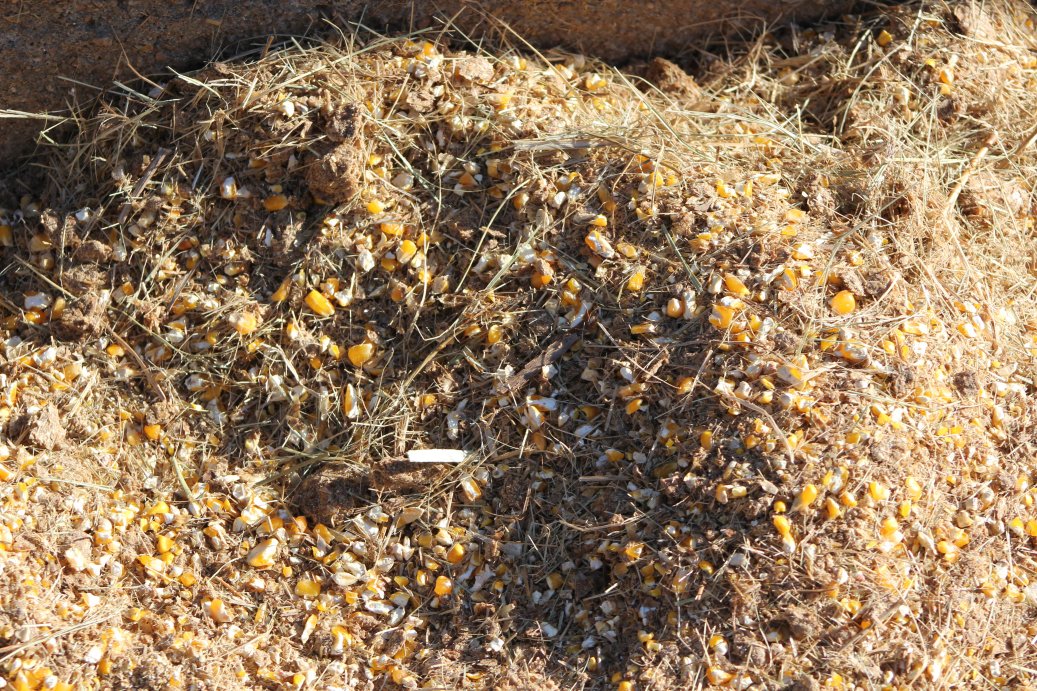
By Karla H. Jenkins, UNL Cow/Calf, Range Management Specialist
When cattle producers check the tag on a bag of supplement or get an analysis back on some hay samples, they mostly likely look for the crude protein content first. Crude protein is derived from the nitrogen content of the feedstuffs and while it is helpful to know, it does not tell the whole story when balancing diets for ruminant animals.
Beef cattle, as well as all other ruminants, actually have a requirement for metabolizable protein. Metabolizable protein includes rumen degradable protein, rumen undegradable protein, and microbial protein. Rumen degradable protein (RDP) is protein that is easily degraded in the rumen making the nitrogen available for the microbes in the rumen. This is necessary so the microbes can initiate digestion in the rumen. Producers might have also heard this type of protein called degradable intake protein or DIP. Rumen undegradable protein (RUP) is protein that is not digested by the microbes in the rumen and is available for the ruminant animal itself for tissue growth or lactation. This has also been called escape protein, bypass protein, or undegradable intake protein (UIP). Lastly, the microbes in rumen complete their life cycle and flow through the digestive tract supplying additional protein to the host animal as well.
Not all feedstuffs contain the same proportions of RDP and RUP. This becomes even more complicated when commodities are mixed together to make supplements because the combinations of ingredients are proprietary to the company selling the product. However, producers should be aware of the RDP and RUP proportions in commonly used feedstuffs so they can choose the supplement best suited for the needs of their cattle. The protein in corn distillers grains is about 40% RDP and 60% RUP, making it a good source of RUP. The protein in forages is predominately RDP while urea is 100% RDP.
The metabolizable protein needs of cattle vary with the stage of production they are in. Additionally, the supplementation needs are also dependent on the protein content of the base diet. For example, growing cattle have been demonstrated to respond to RUP supplementation even when grazing high quality forage because the forage, though high in overall crude protein, is still deficient in RUP. Whether a producer chooses to supplement those calves depends on the price of supplement as well as other factors such as retained ownership, and other resources available in the production system. Lactation and growth both require a source of RUP and therefore, a young cow nursing her first calf and going into the breeding season could benefit from a protein supplement high in RUP. On the other hand, a nonlactating, bred, mature cow grazing dormant native range would benefit from a supplemental source of RDP to support rumen bacterial function.
Also it is important to consider the price of the supplement. There have been times when corn distillers grains were the cheapest source of protein to supplement. When feeding this to mature cows on winter range, it resulted in feeding more RUP than needed, but was the cheapest source of RDP. Additional RUP can be recycled by the ruminant animal and used as a source of RDP. However, feeding excess RDP does not serve as a source of RUP. As commodity markets fluctuate; producers in that situation need to evaluate whether the cheapest source is a urea based supplement or a commodity. For assistance with calculating supplement cost on a unit of protein basis or with ration formulation producers should contact their local extension office or access http://beef.unl.edu.